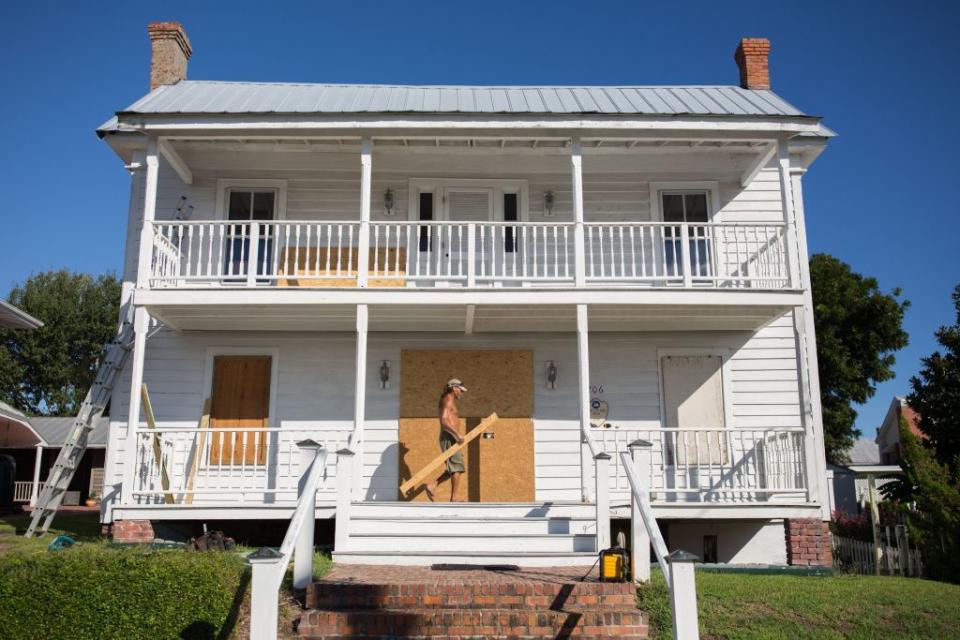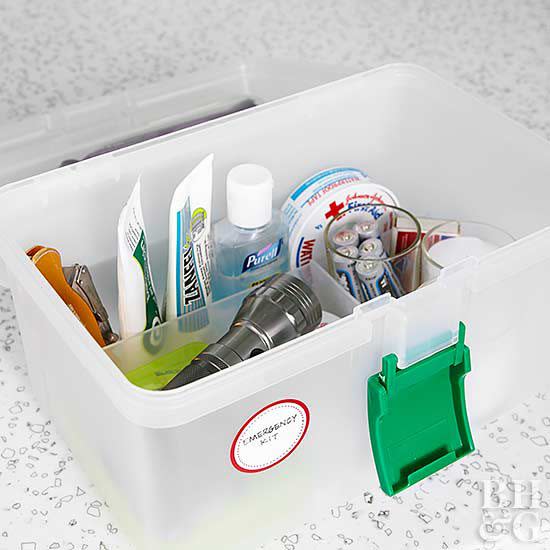Hurricane Prep Tips You Need to Know
Natural disasters are scary and unpredictable and threaten your safety, the safety of your home, and the safety of your community. The worst part? We have no control over the weather. But we do have control over natural disaster preparedness.
Hurricane season officially runs from June to November and comes with a slew of destructive conditions. Heavy rain and high winds are common, and flooding is what leaves the most damage to homes, roadways, and community buildings. With heavy rain often comes lightning, which can also pose a threat to homes and those in the affected areas.
Although the storm will come whether you want it to or not, you can be prepared for the harsh conditions by planning ahead. By creating a smart natural disaster plan and having the right supplies on-hand, the experience can be a little less stressful and scary, and you'll have a better chance of getting through the storm safely.

Courtesy of Getty Images Image courtesy of Getty.
How to Prepare for a Hurricane
The best thing you can do for disaster preparedness is having a family disaster plan. Agree on a meeting point if you need to evacuate your home, and create contact cards that everyone can keep in their wallet or pocket with important phone numbers and medical information (for example, if a child has a severe allergy or preexisting medical condition that a shelter would need to know of).
Always wait for officials to advise evacuation—you can put yourself in more danger if you try to evacuate before local officials tell you to. Listen to weather radio or follow the Emergency Alert System. As you prepare for an emergency, research your closest emergency shelter and what evacuation routes are best (some roads may be susceptible to flooding).
Stock Up On Bottled Water
In a state of emergency, there may not be accessible clean water—and you may not have the resources to boil water. Keep a case or two of bottled drinking water both in your home and in your car so you have clean water wherever you go. If you have a bathtub, clean it and fill it with water for an extra supply of drinkable water.
Related: Must-Know Travel Safety Tips

Make A Natural Disaster Preparedness Kit
Keep disaster preparedness essentials in one easy-to-access spot. Look for a waterproof bag or suitcase so all your necessities stay dry. Pack items like candles, matches, flashlights, batteries, first-aid supplies, an extra phone charger, a blanket, and a multi-tool with a knife or scissors included. A set of clean (and dry) clothes may also come in handy if you get soaked. Also, get a map of your area to keep on hand. If you can find one, include a weather radio so you can keep on top of what’s happening in your area. If you know you will for sure be affected by a natural disaster, consider packing prescription medications, cash, and important personal documents.
Related: What You Should Include in a Car Emergency Kit
Prepare Your House for a Hurricane
Heavy flooding can do a number on your home, and damage is often inevitable. However, there are some steps you can take to hurricane-proof your home. Bring all outdoor furniture inside. Secure the gutters on the outside of your house and make sure the drains are clear so they can work as they're supposed to. Keep tarps and rope handy in case you need to patch holes from storm damage. If you can, board up windows with plywood and seal seams around exterior doors and windows with caulk. Check the edges of your basement as well to seal holes where water could come in.
Inside, make sure you have non-perishable food stocked up and in a place that won’t get wet. Keep dry blankets and clothes handy. Unplug all small appliances and gas tanks to reduce the risk of fires from lightning strikes. Crank up the cool temperatures inside the fridge and freezer and avoid opening the doors in the case of a power outage. Some homeowners keep backup home generators on hand in the event of loss of power. If so, make sure you have enough fuel (and stored in a safe location) to keep it running as long as needed.
Editor's Tip: To determine if your refrigerator/freezer lost power in the storm, we recommend freezing water in a cup, then place a quarter on top before evacuating. If the power has been out and the cool air has been released, the ice will melt and the quarter will sink. In that case, the food is unsafe and shouldn’t be consumed. If the quarter is still on top of the ice, the food is probably okay to eat (double-check perishables like fruits and veggies for mold just in case).

Make A Plan For Your Pets
Keep your pets safe during an emergency. They are a part of the family, too—but their disaster plan varies a bit. In the event you evacuate, make sure your hotel is animal-friendly. If you can’t find a pet-friendly hotel nearby, make a housing list of potential friends and family that could watch your pet if you need to evacuate. Make sure your pet has a collar with your contact information or a microchip so you can be reunited with your pet if you are separated. Also, keep photos of your furry friend on hand.
Create a pet emergency kit as a part of your family and home emergency kits. Make sure they have a few days worth of water, food, and any medication they may need. Include a leash, litter, and litter pans as needed. Try to have a pop-up crate or kennel in your emergency kit—this will allow for safer transportation and may help your furry family member feel safer. As you are packing important documents in your emergency kit, include your pet’s records that prove they are up-to-date on their shots.

